
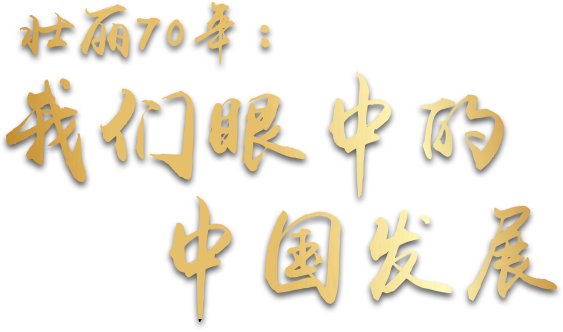
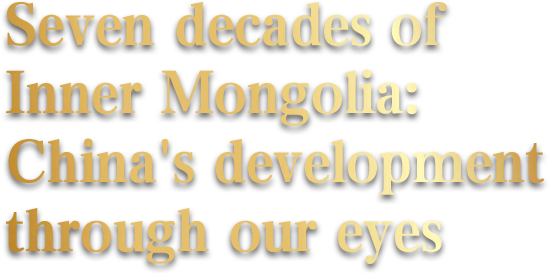



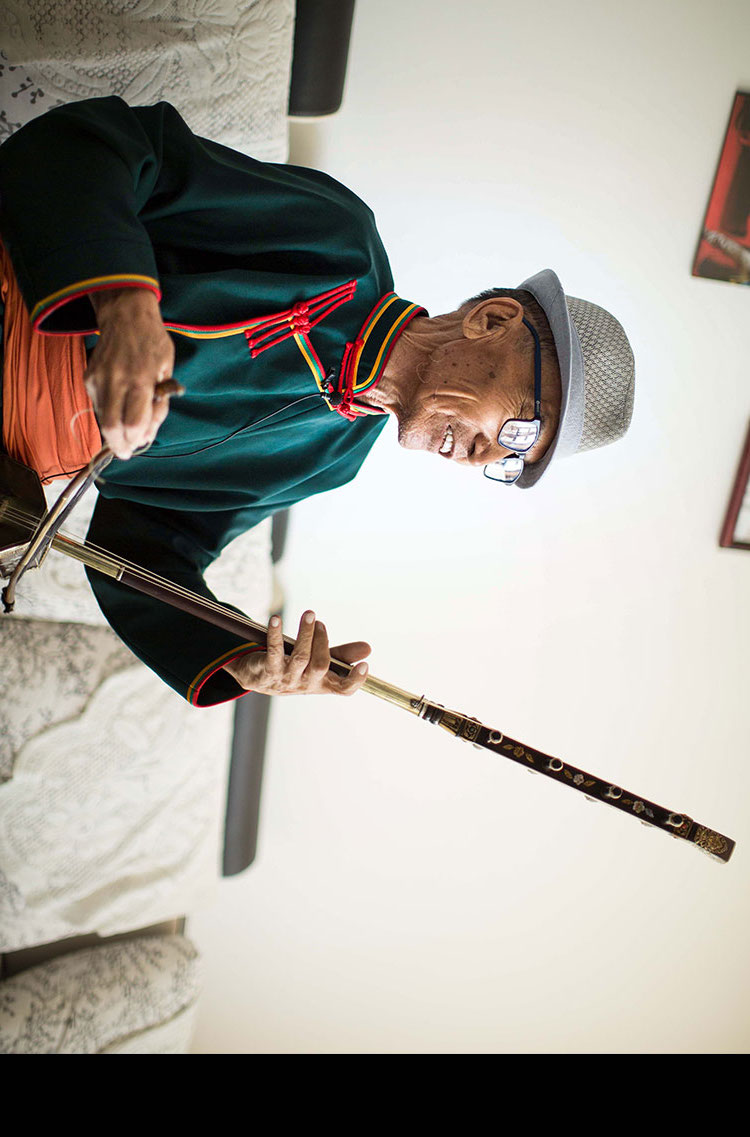



“蒙古族的传统艺术需要传承和发扬,这是属于全人类的文化瑰宝。”
拉西敖斯尔,77岁
琶杰-格斯尔的第一代传承人
Traditional Mongolian art should be protected and promoted, and it belongs to all of humankinds.
Raxiodser, 77
Inheritor and singer of Mongolian epic cycle, The Epic of King Geser


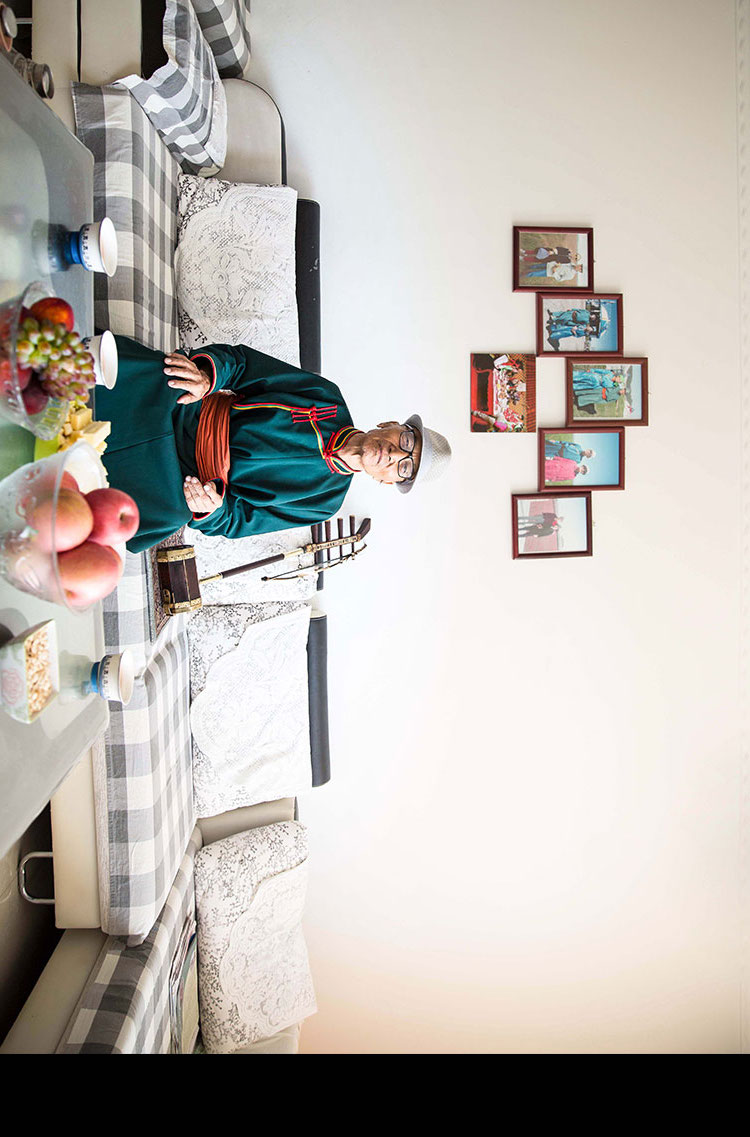



来自通辽市扎鲁特旗的拉西敖斯尔今年77岁了。拨弄着手中的四胡,他轻声吟唱着《格斯尔》中的经典曲段。《格斯尔》被誉为世界最长史诗,年逾七旬的拉西敖斯尔老人仍能一字不漏地记住每一句歌词、每一处旋律。
Holding his four-stringed fiddle, 77-year-old Raxiodser, a musician from Jarud Banner in Tongliao, Inner Mongolia, can still remember the texts of the “Epic of King Geser,” an ancient epic cycle reputed by some to be the longest in the world.


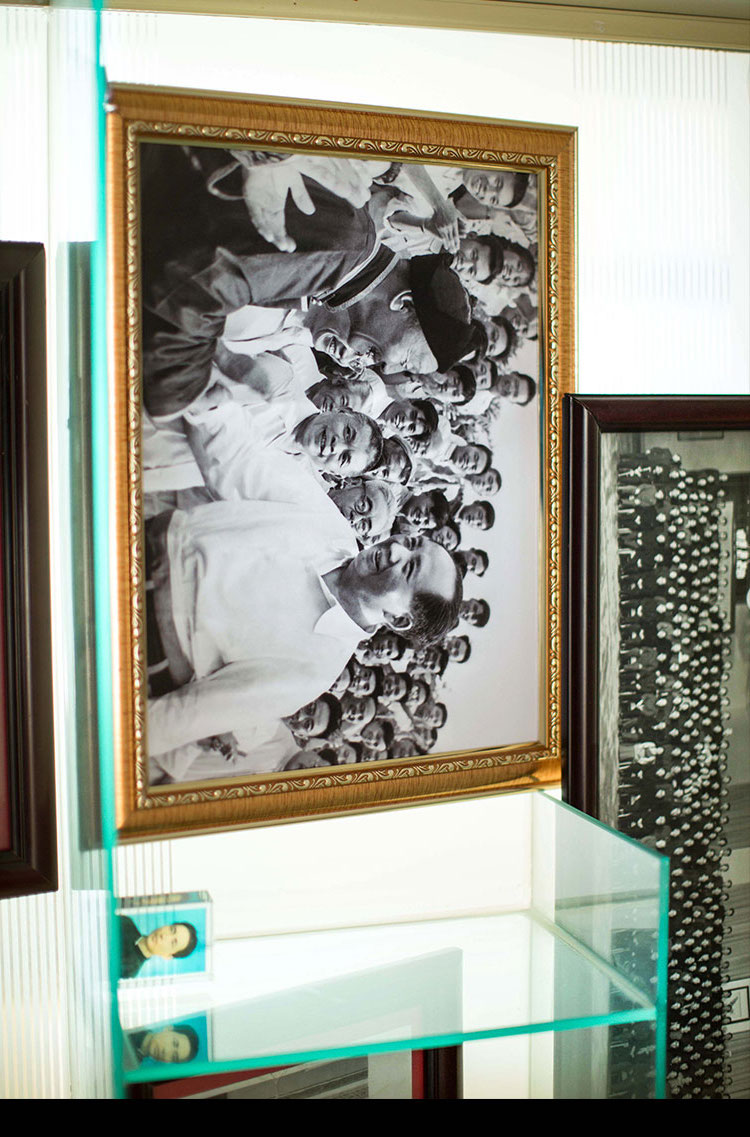



16岁时,拉西敖斯尔加入了乌兰牧骑,成为一名光荣的民间艺术家。打那时起,他就决定奉献自己的一生,传承并弘扬传统文化。师承《格斯尔》大师琶杰,他将这一伟大的民间艺术发扬光大。时至今日,许多年轻艺术家师承他,将这一文化瑰宝奉献给世界各地的观众。
《蒙古族说唱艺术家拉西敖斯尔“不忘初心 传承民族文化”》
点击阅读
As an artist and a promoter of traditional culture, he joined Ulan Muqir, a traveling art troupe performing for herdsmen in remote areas at the age of 16, and has dedicated his whole life to preserving traditional Mongolian Culture. Now he has countless students, who help him to introduce the Epic of Geser to the world.
Culture inheritance in Inner Mongolia: the story of great King Geser
Read


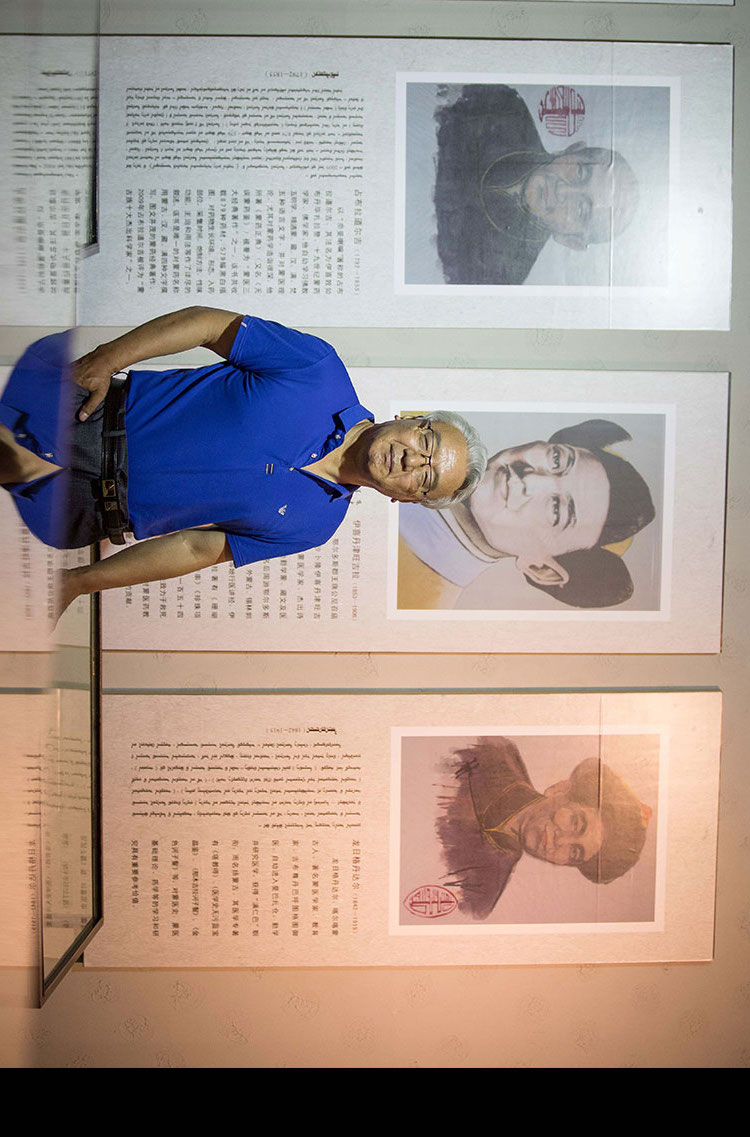



“蒙医药的历史源远流长。如今,这一民族瑰宝正在逐渐复兴,从一门较为小众的传统医学转变为系统现代的医药科学,为更多人所熟知。”
白彦满都拉,63岁
内蒙古民族大学退休蒙西医结合临床医学教授
“Generally considered to date back to the time of Genghis Khan (1162-1227, founder of the Mongol Empire), TMM is now stepping out of a relatively small circle of practitioners to reach more people.”
Bayanmandula, 63
Retired professor of traditional Mongolian medicine (TMM)






虽已退休多年,63岁的白彦满都拉依然执着于蒙医药的科学研究。作为“文革”后的第一批蒙医专业大学生,白彦满都拉将自己的青春和热诚都奉献给了蒙医药。老骥伏枥,志在千里。如今已经退休的他依然为学生讲课答疑,将这门古老传统医学的秘密传递给年轻的一代人。
Born into a Mongolian family, Bayanmandula started to grow a keen interest in TMM when he was a child. When China's national college entrance exam, the gaokao, resumed in 1977, Bayanmandula took the exam and was admitted to the Inner Mongolia Medical University, becoming one of China's first university students to major in TMM.






历经数十年的辛苦耕耘,白彦满都拉所在的内蒙古民族大学蒙医药学院已经拥有发明专利15个、新药证书2个、临床批件6个,专著60余部。每年,超过1100名中外学生来内蒙学习传统蒙族医药,许多学成后都成为了专业的蒙药医师。
《复兴中的蒙医药:传统与现代的完美结合》
点击阅读
After decades of hard work, Bayanmandula and his colleagues have successfully conducted over 300 TMM research programs. Every year, over 1,100 domestic and foreign students come to study TMM, many of whom go on to become professional TMM physicians.
Revival of traditional Mongolian medicine: a combination of old and new
Read


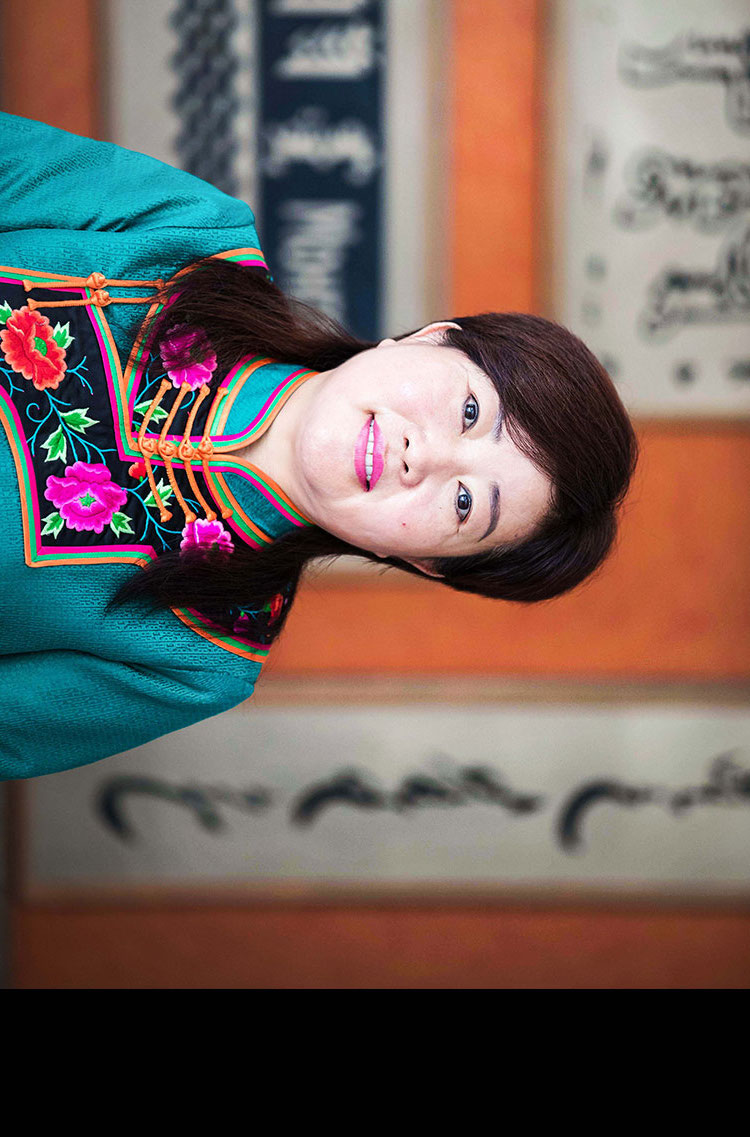



“普通话是我们中国人的母语,蒙语是我们蒙古族人的文化根源,英文则让我们的孩子走向世界,他们将成为内蒙古新时代的领航员。”
康喜玛,52岁
扎鲁特旗蒙古族实验小学校长
“The Mongolian language is our cultural root, Mandarin represents our identity as Chinese, while English makes our students international citizens, our children will lead Inner Mongolia to a brand-new era.”
Kangxima, 52
Head of Jarud Mongolian Primary School


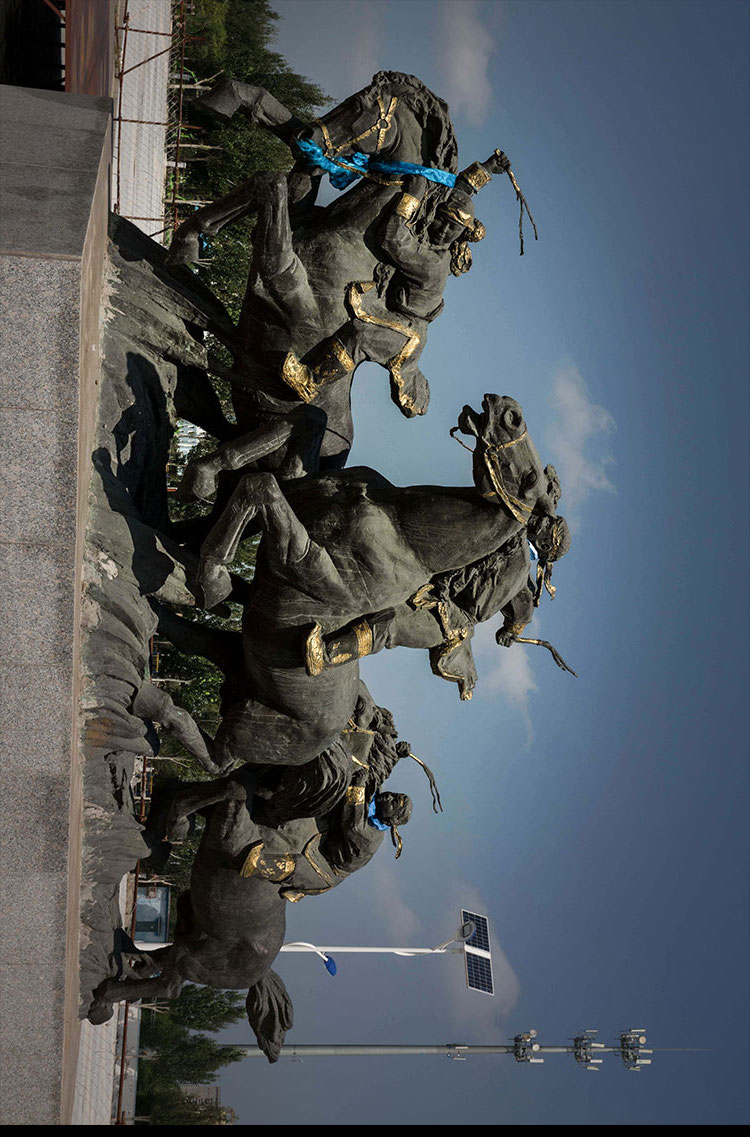



作为中国蒙古族人口最多的地级市,通辽的蒙古族语言和传统文化教育发展迅猛,方兴未艾。在全市109所以蒙语授课,弘扬蒙古族传统文化的中小学中,扎鲁特旗蒙古族实验小学的教育成果尤为出色。
Located in Tongliao, a city that has the largest Mongolian population in China, Jarud Mongolian Primary School is one of the 109 local schools that feature traditional Mongolian culture, as well as using Mongolian as their primary teaching language.


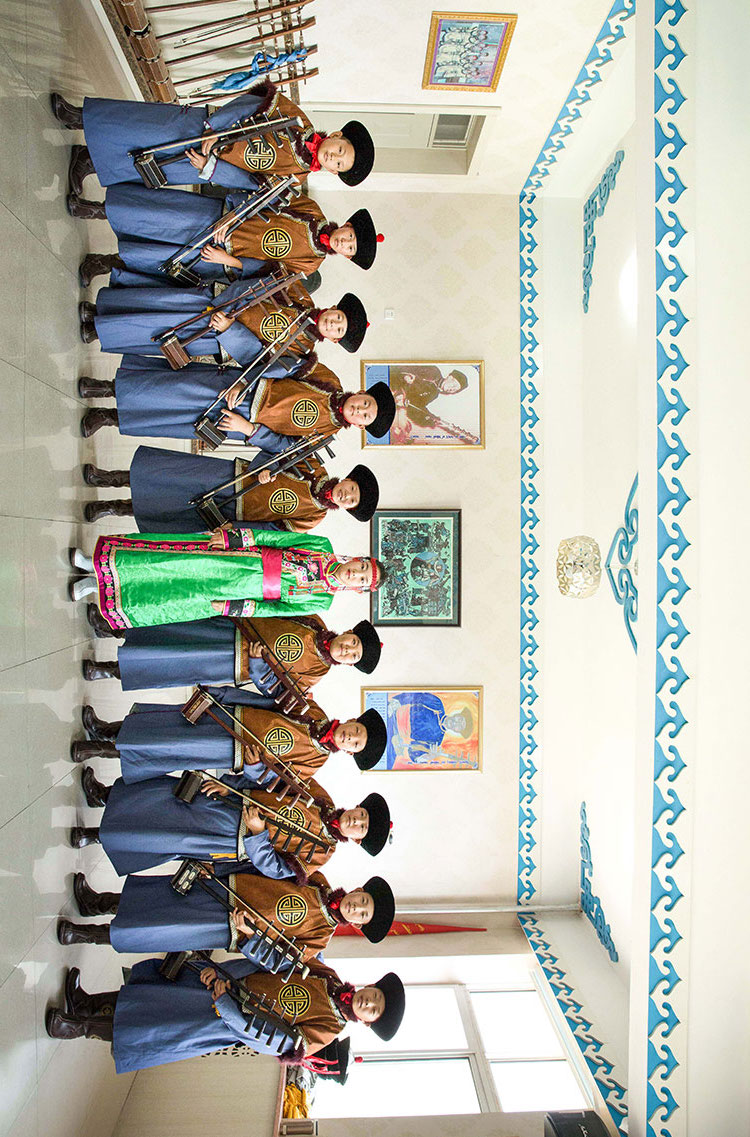



自2005年起,康喜玛便开始邀请蒙古族民间艺术家来学校开设蒙族文化兴趣班,并聘用专业教师培养孩子们对本民族文化的热爱。目前学校开设十余个蒙族文化兴趣班,教授乌力格尔、马头琴、科尔沁民歌、蒙古象棋等科目。
Though traditional Mongolian culture has always been a compulsory course at school, Kangxima invited cultural experts to develop a systematic teaching module for the students. From 2005, Kangxima and her colleagues began researching Mongolian culture, as well as designing a professional course for the students.


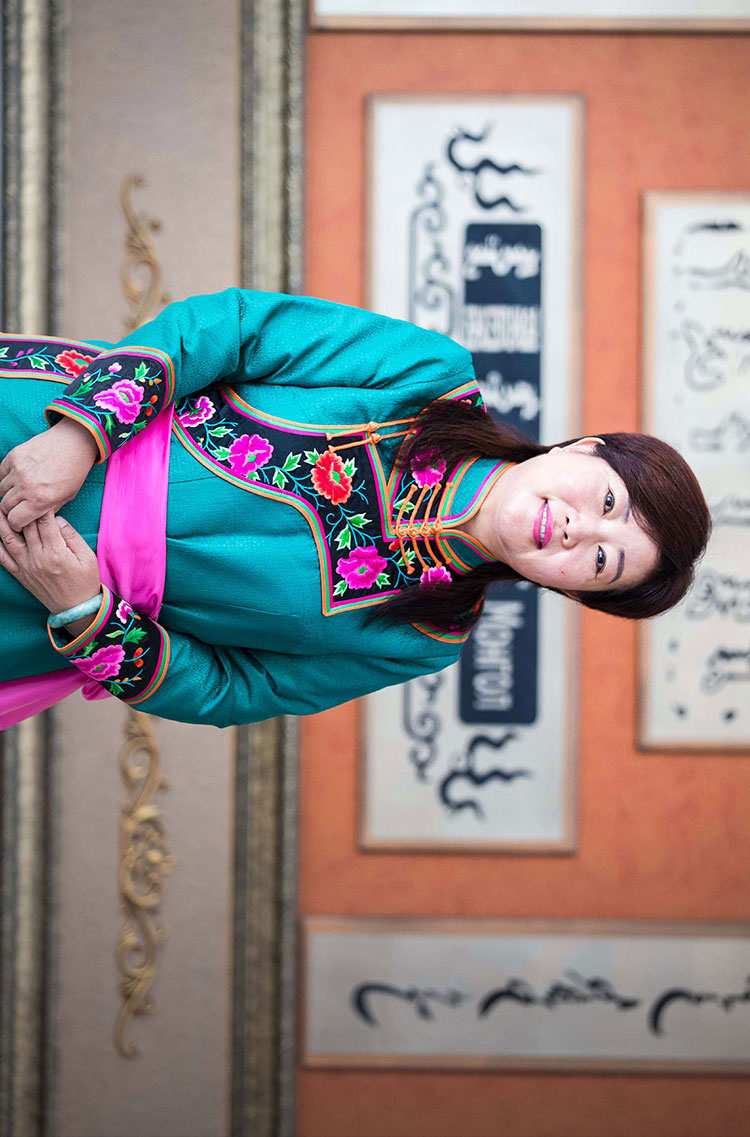



“我是一个教育工作者,也是一个地地道道的蒙古族人。在流行文化冲击传统文化的大环境下,保护和传承蒙古族的文化瑰宝就显得尤为重要。我们的孩子要海纳百川、博采众长,在掌握本民族语言文化的基础上,还要团结其他民族的小伙伴,了解世界文化。做一个热爱祖国的中国人,一个以民族文化为荣的蒙古族人,一个通晓世界的世界公民。”康喜玛说。
《草原文化的继承者:方兴未艾的内蒙古传统文化教育》
点击阅读
"As a Mongolian myself, I know how important it is to preserve our traditional culture, especially nowadays, when market-oriented popular culture prevails among the young generation," said Kangxima, head of Jarud Mongolian Primary School.
Cultural inheritors on the grassland: traditional art thrives in Inner Mongolian schools
Read


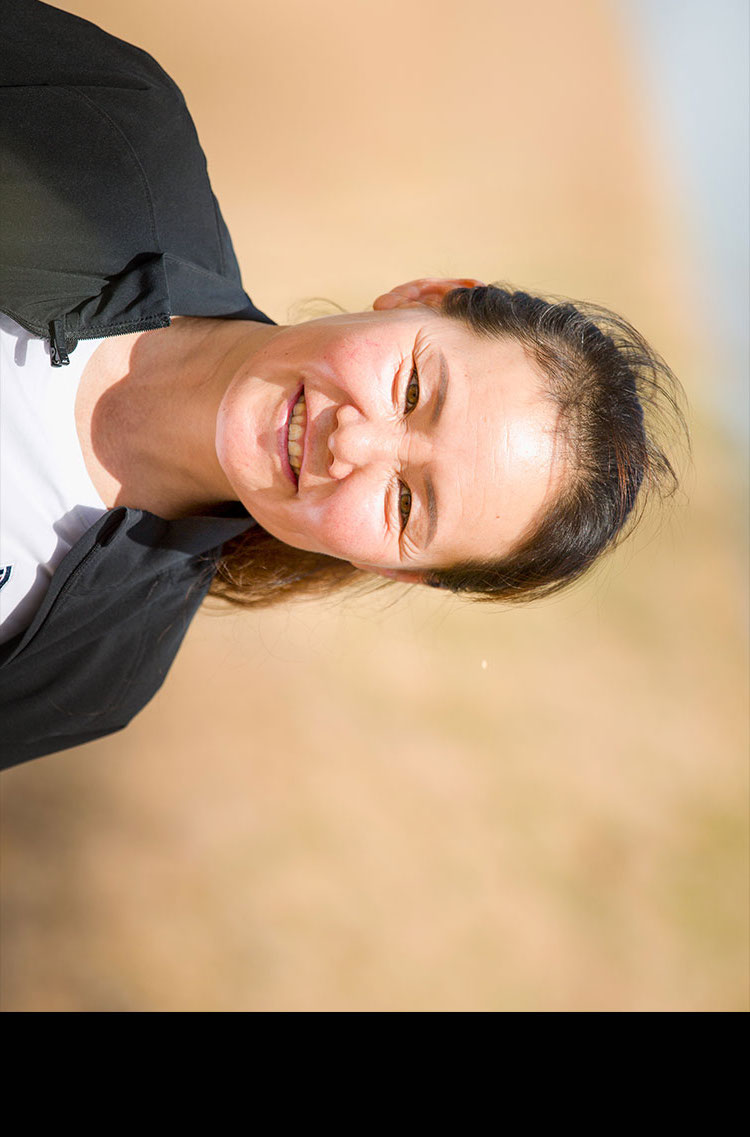



“常有人跟我说治沙植树不是女人该干的活,但我绝不认同。女人和男人一样有手有脚,一样勇敢坚强,也一样能为家乡的绿化和沙漠的治理贡献自己的力量。”
敖特更花,43岁
独贵塔拉镇治沙民工队队长
“People told me that planting trees was not a job for a woman. I wanted to prove to them that women are as strong as men, and we can also make our contribution to stopping the spread of desert.”
Otgonhuar, 43
Leader of sand control team in Kubuqi Desert


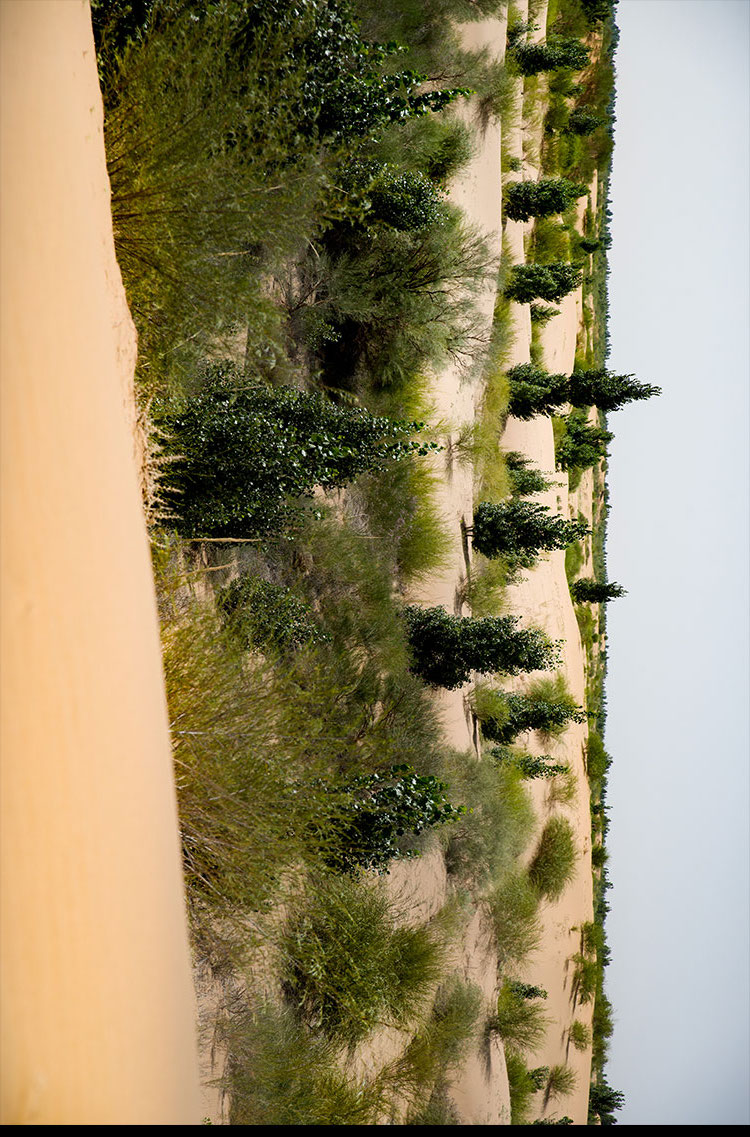



敖特更花的家乡独贵塔拉镇位于中国第七大沙漠——库布其沙漠的腹地。小时候的敖特更花憎恶沙漠,憎恶自己的家乡。在她看来,沙漠吞噬了她生活中一切美好的事物,埋葬了历代人对绿色的渴望。
Living in Duguitala, a small village nestled in the Kubuqi Desert, China's seventh-largest desert, Otgonhuar used to hate her hometown and the deserts surrounding it.






“小时候,我们家的房门常在一夜之间就被沙子堵住,只能破窗而出。房屋常被黄沙掩埋,当地人只能不停地搬家。”敖特更花说道。
"When I was a kid, moving dunes would block our doorway overnight, and we had to fight our way out from the windows. Our houses were constantly buried under sand, so we had to move quite often," said Otgonhuar.


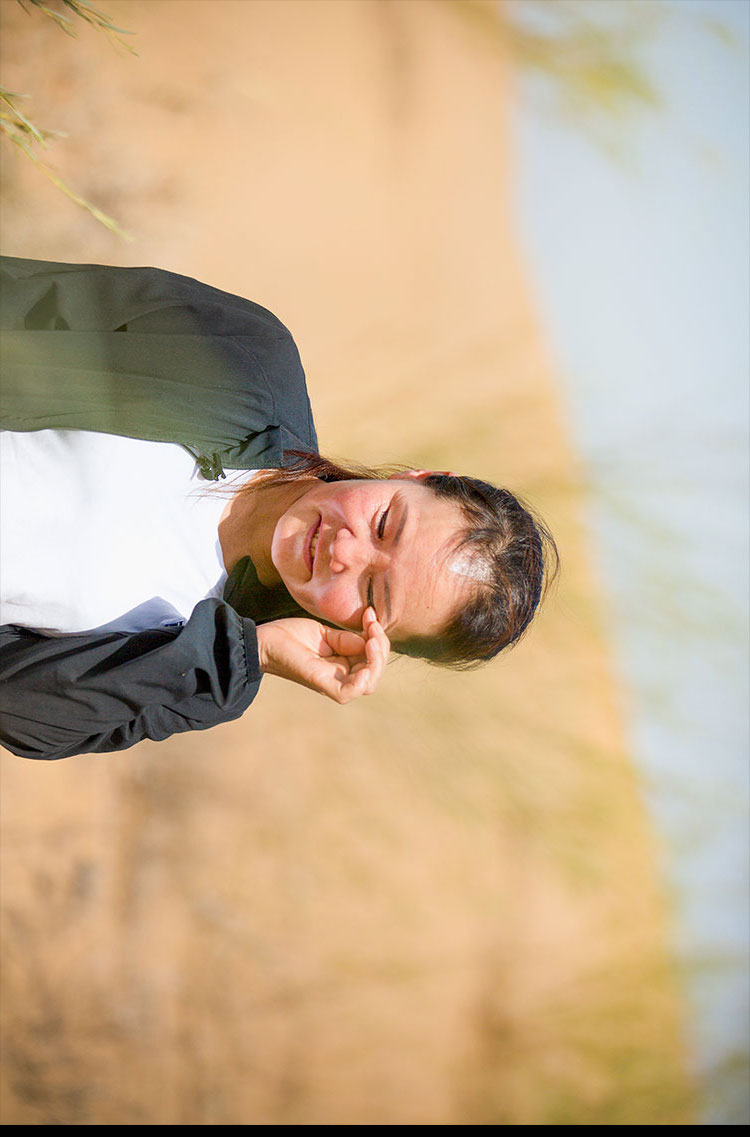



随着库布其穿沙公路的开通,敖特更花的想法发生了改变。她不再对沙漠植树这一倡议嗤之以鼻,而是全身心地投入其中,想要为家乡,为沙漠带来一抹宝贵的绿色。作为独贵塔拉镇200多个治沙民工队唯一的女队长,敖特更花向世人证明,女人能顶半边天,女人能种半坡树。
In 2007, Otgonhuar received an offer from a local company to plant trees in the Kubuqi Desert. She gathered workers from poor families and began her tree-planting business. Under her leadership, 25 low-income workers now earn a daily wage of around 200 RMB.






“我的民工队鼓励女性的加入。我希望她们能摆脱世俗偏见和自身的局限,大胆地投入到自己所热爱的工作中。这世上没有男人能做,女人不能做的事情。” 敖特更花说。
《“沙漠玫瑰”敖特更花》
点击阅读
"Many women, who dared not to step out of their comfort zones, were encouraged to join my team. There is nothing a man can do that a woman can't," said Otgonhuar.
Roses in the desert: planting an oasis between the dunes
Read


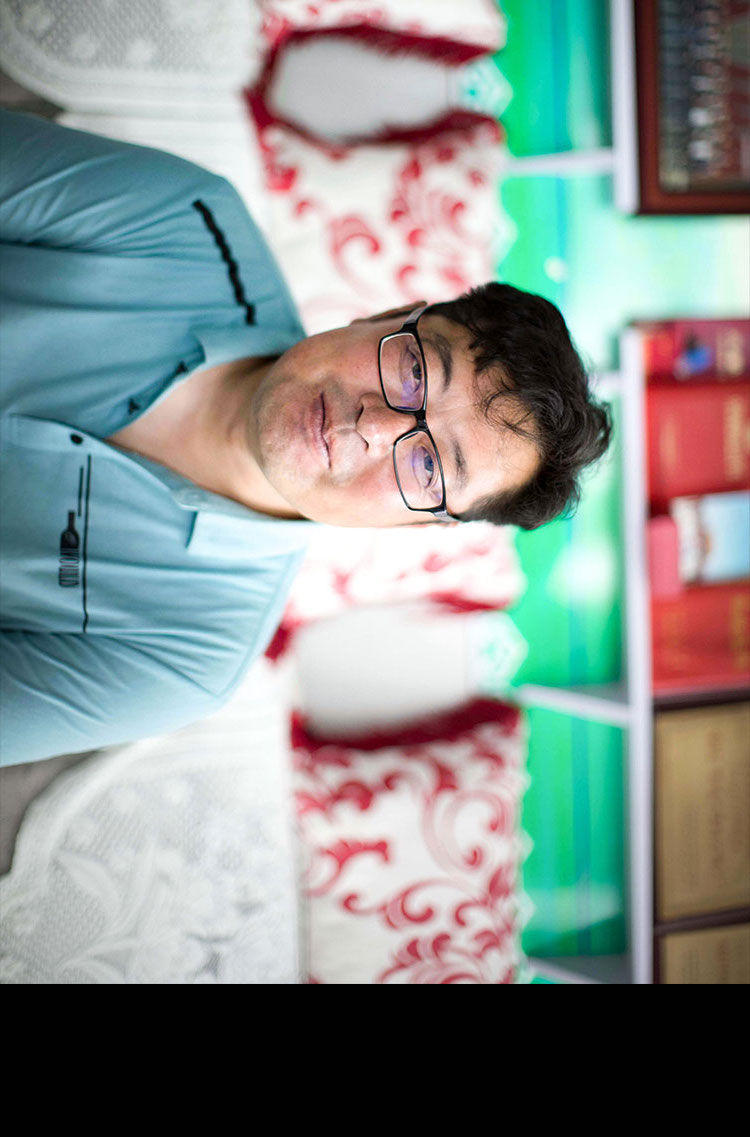



“牛粪可以用来为牧草施肥,人工种植的有机牧草又能为牛群提供养料,保护草原不受伤害。采用新技术养牛后,我们的牧民得以脱贫,草原的环境也更好了。”
刘金山,39岁
科左后旗巴嘎塔拉苏木南巴嘎查党支部书记
"Cow manure can be used to grow shrubs and grass, while foraging naturally can help cattle grow healthier and faster. Now all of our cows are kept in controlled areas to help protect the local environment."
Liu Jinshan, 39
Cattle breeder, leader of poverty alleviation


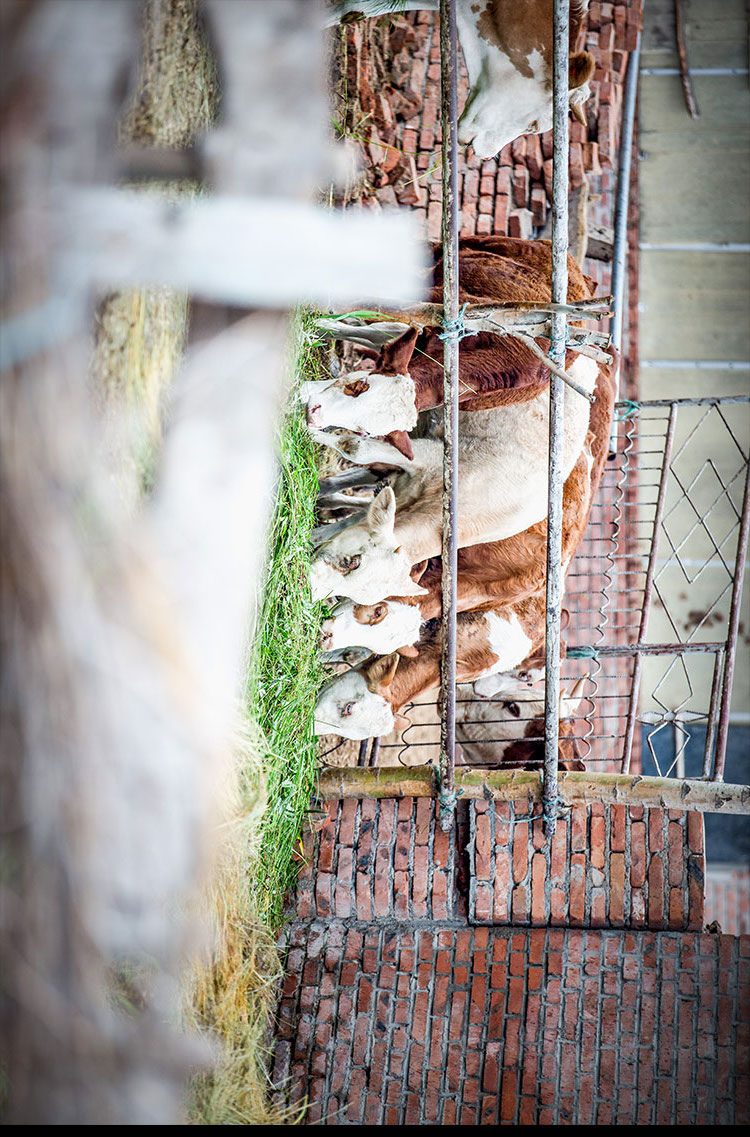



乍看之下,刘金山的养牛场并不起眼,这里却是中国西门塔尔牛的发源地,也是驰名中外的科尔沁牛肉的故乡之一。
Located in Horqin Left Rear Banner of Tongliao, Inner Mongolia, Liu Jinshan's small pasture is not impressive at first glance, but the cattle here enjoy worldwide popularity. Horqin beef, the only meat produced in China that is recognized by the International Meat Secretariat, has helped locals leave poverty behind.


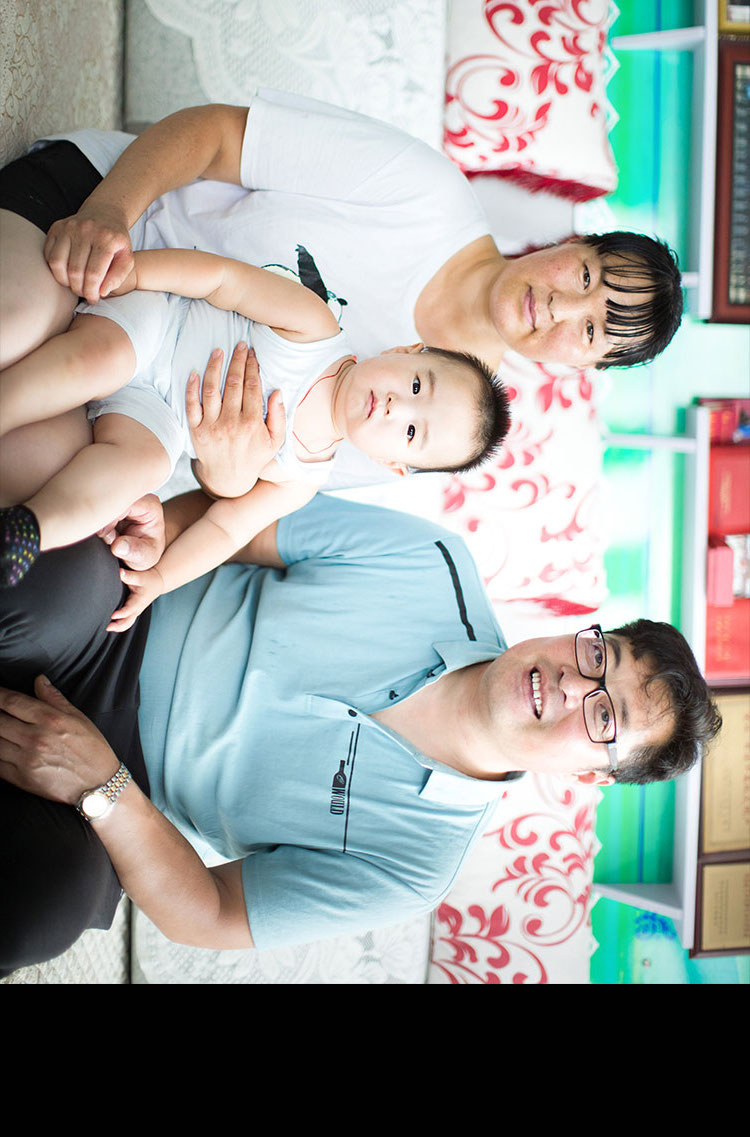



从70年代起,当地便将本地黄牛与由加拿大引进的西门塔尔牛杂交,时至今日已经培育了5代杂交“科尔沁牛”,被称为中国的“西门塔尔牛”。科尔沁牛肉质鲜嫩,成为当地最有名的特产,在世界上也享有美誉。
According to Liu, technology and brand awareness are the secret weapons that helped Horqin beef earn its global reputation. Residents formed a cattle cooperative in 2012, where resources and investment were gathered to adopt advanced technologies, as well as develop marketing strategies.






靠养牛发家的刘金山不但自己脱贫,还带着全村人一起致富。曾几何时,当地的贫困家庭年收入只有不到2000元,现在每户人家都至少养4头牛,每头牛的纯利润就高达5000元。
《内蒙古农牧民:坚持“绿富同兴”》
点击阅读
With the reputation of Horqin beef spreading globally, locals have also gained great benefits. Most poverty-stricken families used to earn less than 2,000 RMB per year, but now, every household in Liu's village keeps at least four cows, and each can generate a net profit of over 5,000 RMB.
Poverty Alleviation in Inner Mongolia: Tradition, innovation and greenery
Read


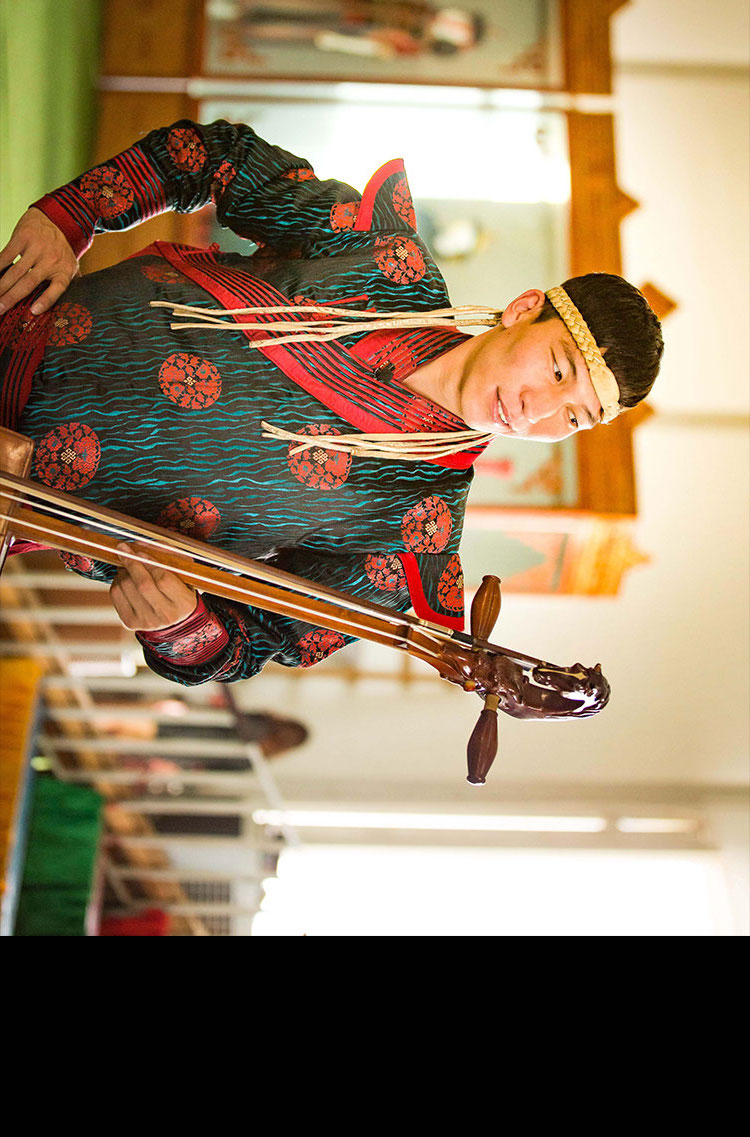



“呼麦是一项历史悠久的蒙古艺术。我读书的时候学习呼麦,现在的工作则是呼麦表演,呼麦让我为传统文化感到骄傲。内蒙古是一片适合传统文化发展的土壤,我想继续在这里弘扬呼麦艺术。”
朝格图,26岁
蒙古青年呼麦艺术家
“Khoomei is a traditional art form that has been practiced for hundreds of years. I studied it at school, because it makes me proud of Mongolian culture.”
Qogtu, 26
Khoomei singer from Mongolia


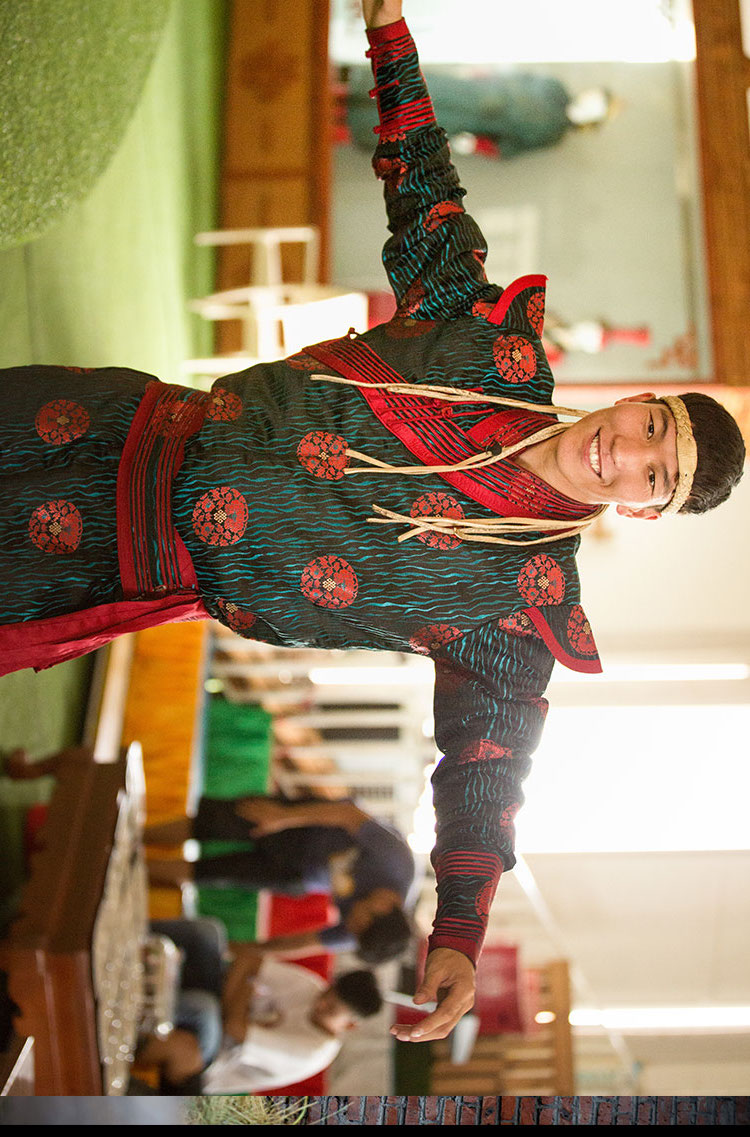



26岁的呼麦艺术家朝格图来自蒙古国。几个月前,他和同伴们来到鄂尔多斯,在这片浸透着蒙古族文化的热土上,这批年轻人开始了自己的表演生涯。
Qogtu, a Khoomei singer from Mongolia who has been performing traditional throat singing at a cultural theater in Ordos for three months, said he would promote traditional Mongolian art to the world.


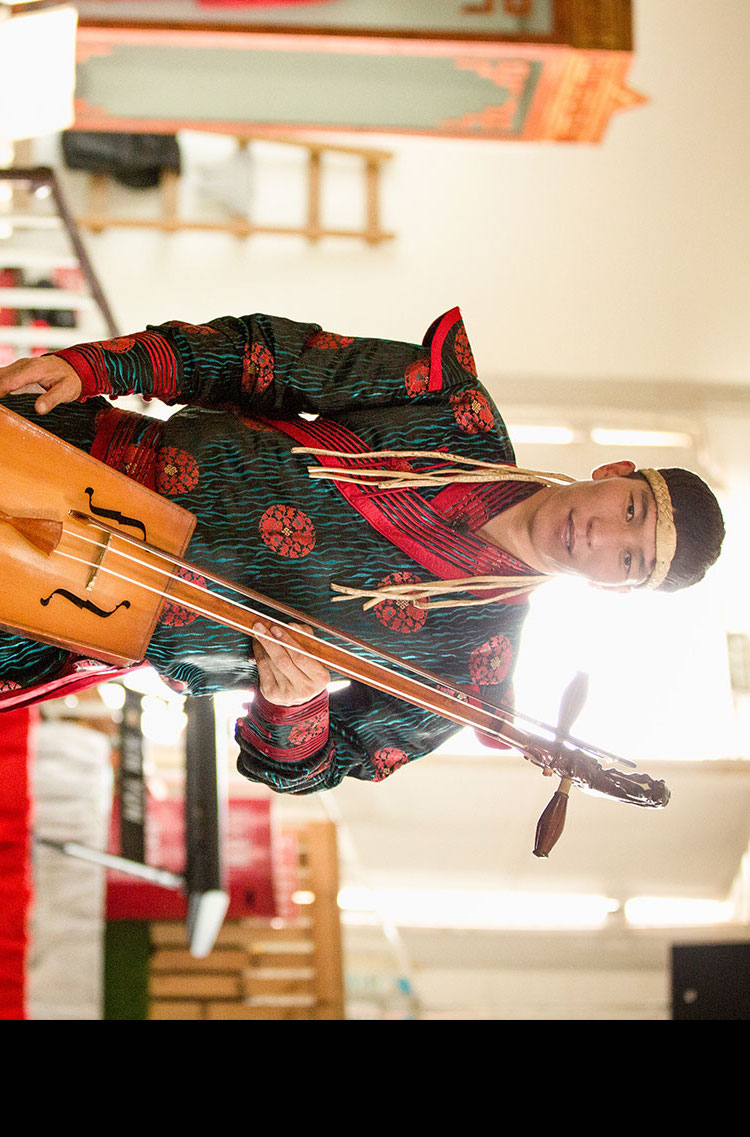



在朝格图看来,内蒙古是一片适合传统文化生存的土壤。观众们对他的呼麦表演报以热烈的掌声,这让他深感骄傲,也为自己作为中蒙两国文化使者的角色感到自豪。
“Khoomei is a traditional art form that has been practiced for hundreds of years. I studied it at school, because it makes me proud of Mongolian culture,” he said.


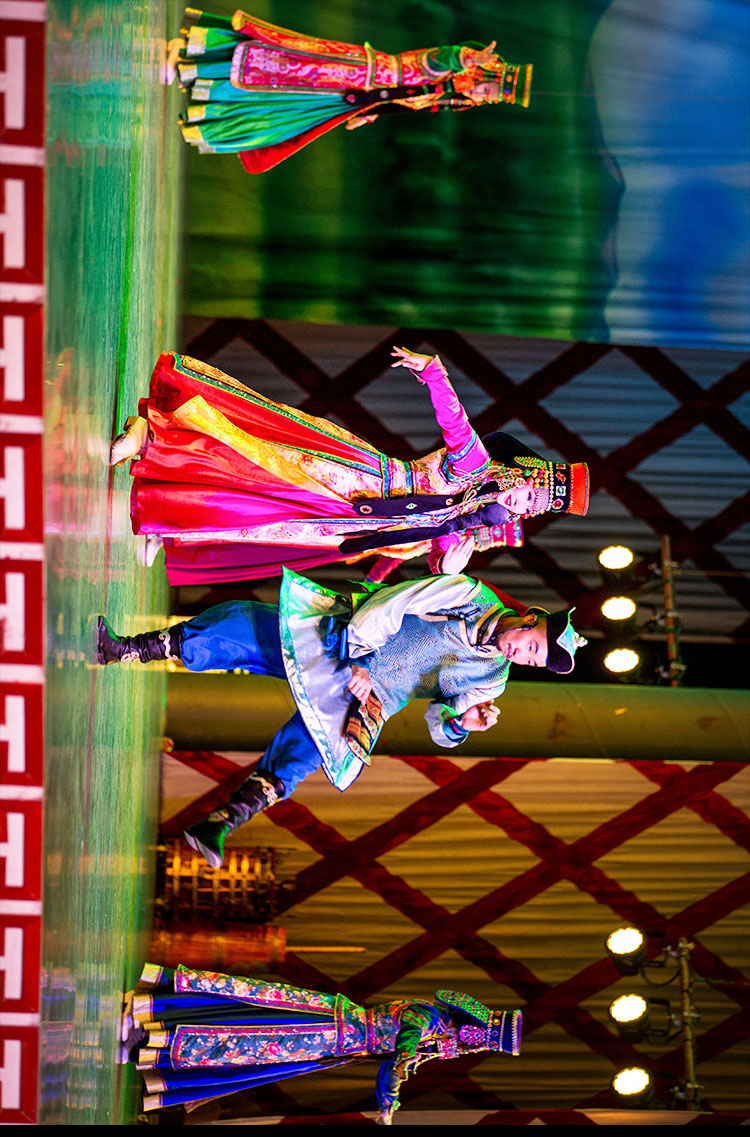



虽然朝格图在内蒙古才生活几个月,他对这片土地却产生了深深的感情。他希望自己的歌声能在这里受到欢迎,也希望能为传承呼麦艺术贡献一份力量。
《蒙古族说唱艺术家拉西敖斯尔“不忘初心 传承民族文化”》
点击阅读
Qogtu explained that he would like to stay in Inner Mongolia longer, as the atmosphere surrounding traditional culture there is strong. He further noted that he wanted more people to learn Khoomei, and to know the beauty of it.
Culture inheritance in Inner Mongolia: the story of great King Geser
Read


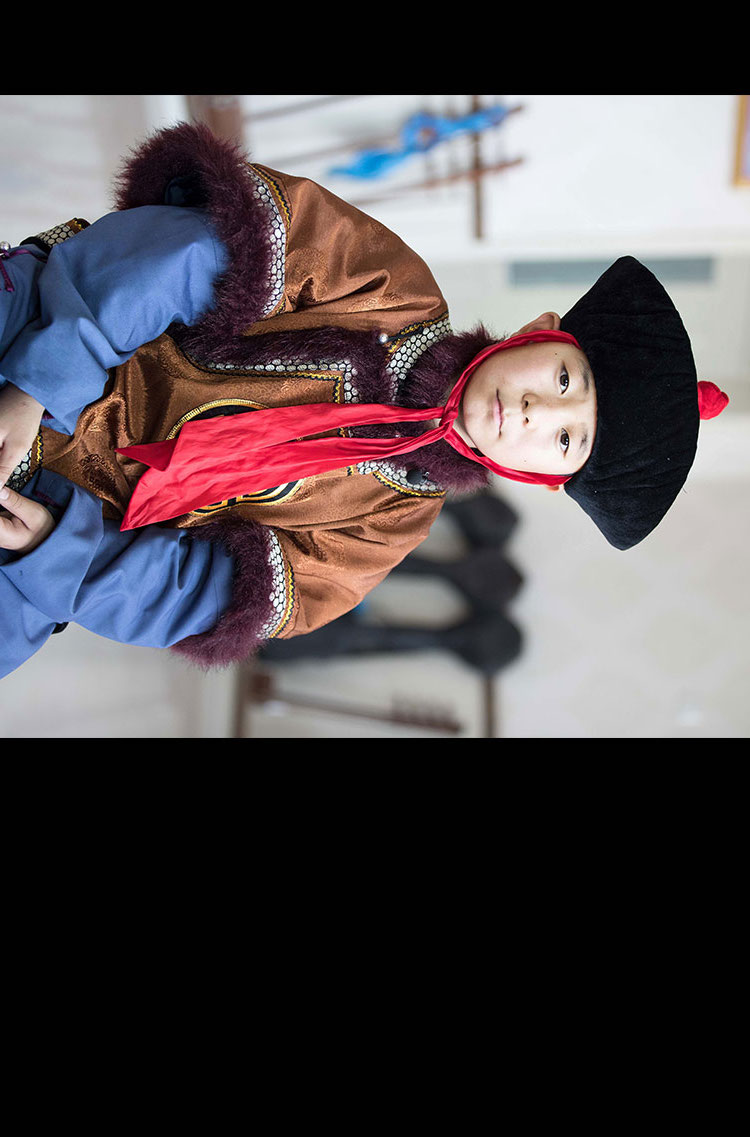



“我肩负着传承乌力格尔的使命,我为此感到很自豪。我希望通过表演让大家认识到乌力格尔的魅力。”
青格勒图,13岁
扎鲁特旗蒙古族实验小学学生
“I am now carrying the responsibility to preserve Uliger, for which I feel very proud. I hope more people can learn about my culture through my performance.”
Qinggelt, 13
Student from Jarud Mongolian Primary School


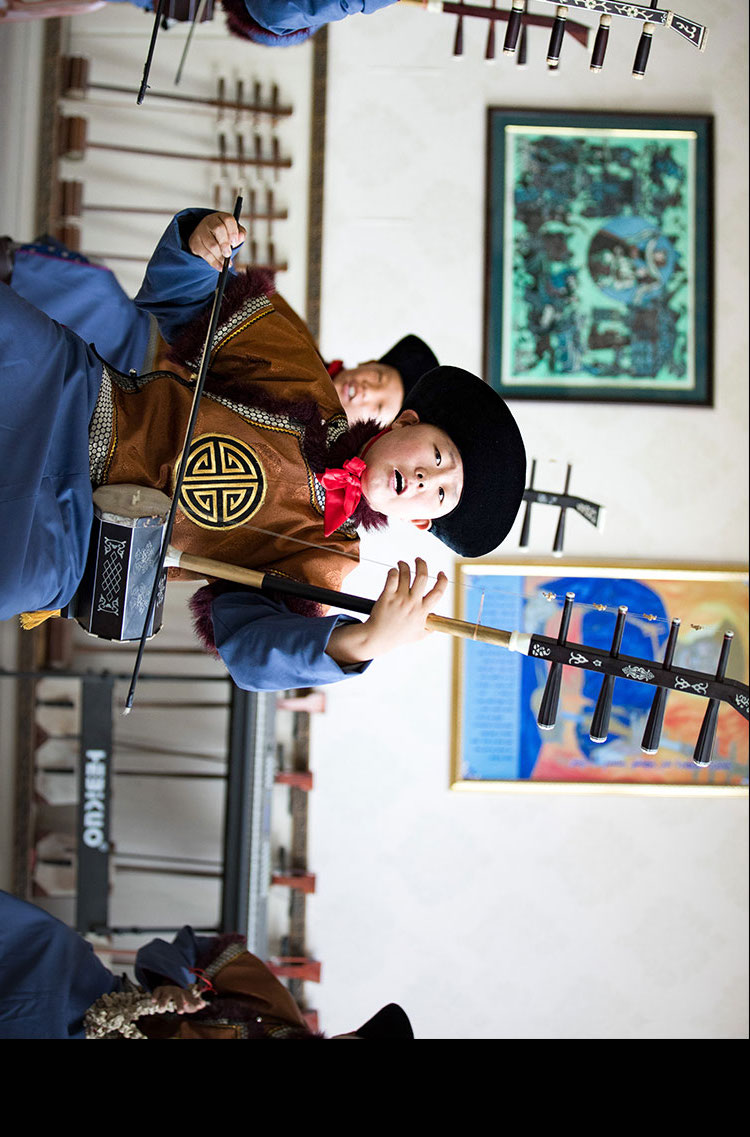



美国作家欧亨利曾说道:“当一个人热爱着他的艺术时,再多的付出也可以忍受。”13岁的青格勒图或许没读过欧亨利的作品,却是这句名言的践行者。他的父母为他取名“青格勒图”(蒙语意思为开心),而这个男孩也在乌力格尔这一传统蒙族艺术上找到了属于自己的快乐。不论炎炎夏日还是簌簌寒冬,青格勒图和他的伙伴们都毫不松懈地练习乌力格尔。
O. Henry once wrote, "When one loves one's art, no service seems too hard.” Although 13-year-old Qinggelt may know nothing about O. Henry, his love for Uliger, the traditional Mongolian art of singing, has shown the truth of this famous statement.


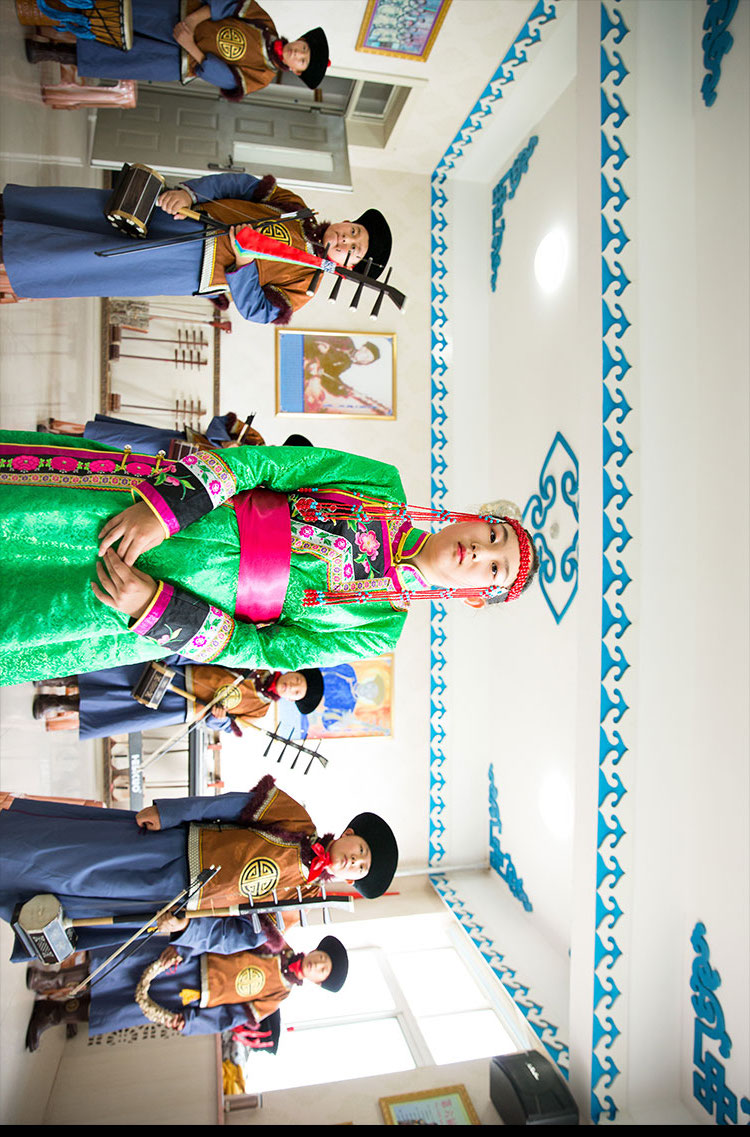



乌力格尔又被称为蒙古族的说唱音乐,是一种将蒙古族文学作品和传统音乐合二为一的艺术表现形式。乌力格尔艺术家一般手持四胡,慷慨激昂地歌颂蒙古族的神话人物和民族英雄。
Dubbed "Mongolian rap," Uliger is a form of traditional art that combines Mongolian music and literature, telling the legends of Mongolian mythological and historical heroes. Uliger performers usually play on a four-stringed fiddle, singing the stories rhythmically.


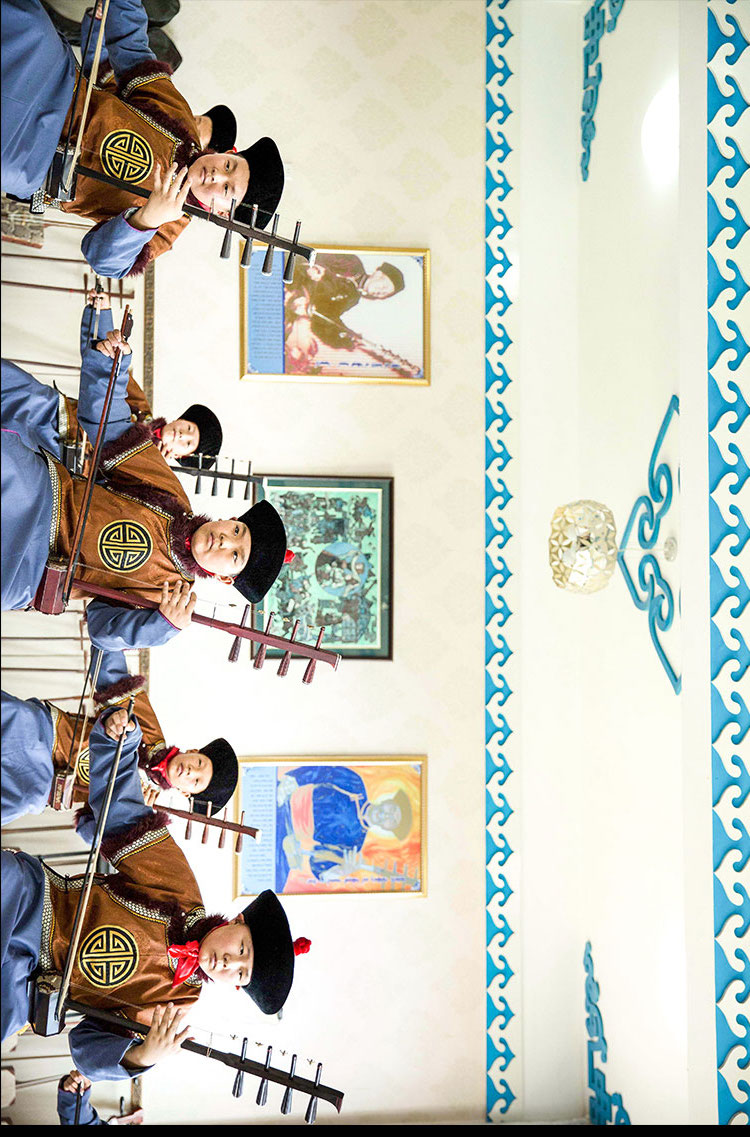



“乌力格尔是蒙古族文化中不可或缺的一部分,已经代代相传很多年了。我的爸爸妈妈都很喜欢我唱乌力格尔,每天我都要花很多时间练习乌力格尔,但我不觉得累,我觉得很高兴。”青格勒图说。
《草原文化的继承者:方兴未艾的内蒙古传统文化教育》
点击阅读
"Uligers are significant in our culture, given their long-standing tradition of passing stories on by word of mouth. I spend many hours every day polishing my singing skills and memorizing the stories, but I feel quite happy about it," said Qinggelt.
Cultural inheritors on the grassland: traditional art thrives in Inner Mongolian schools
Read


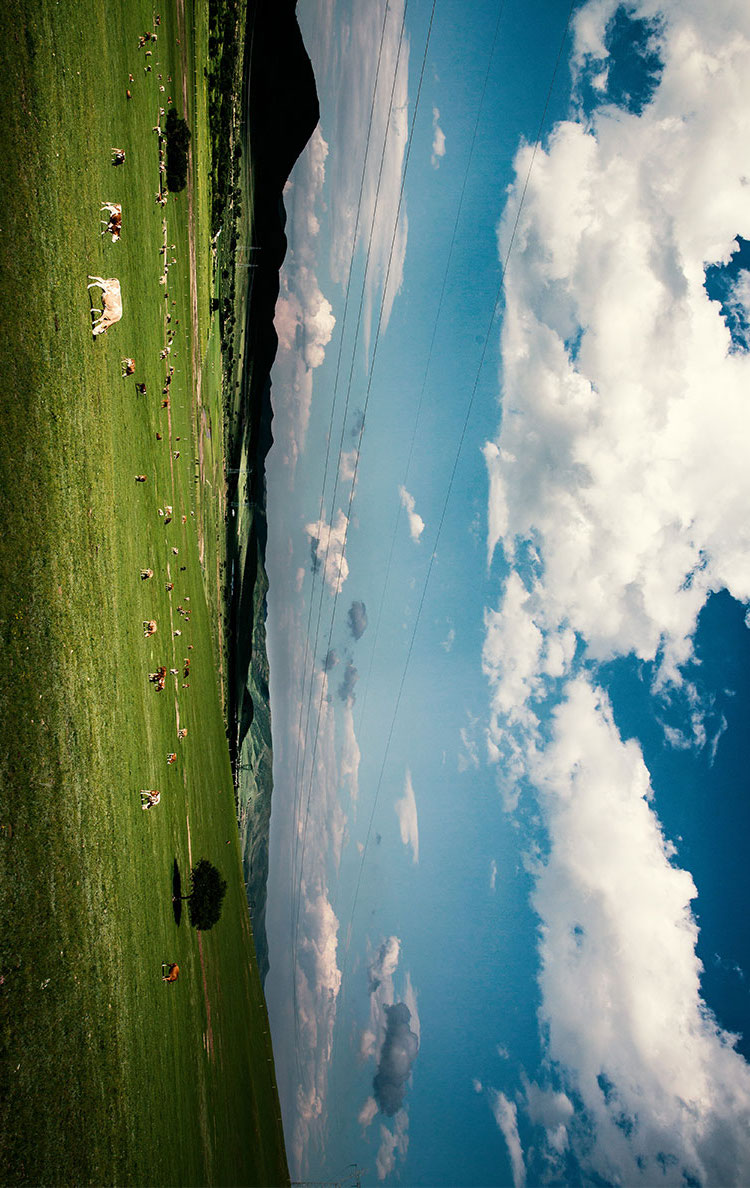
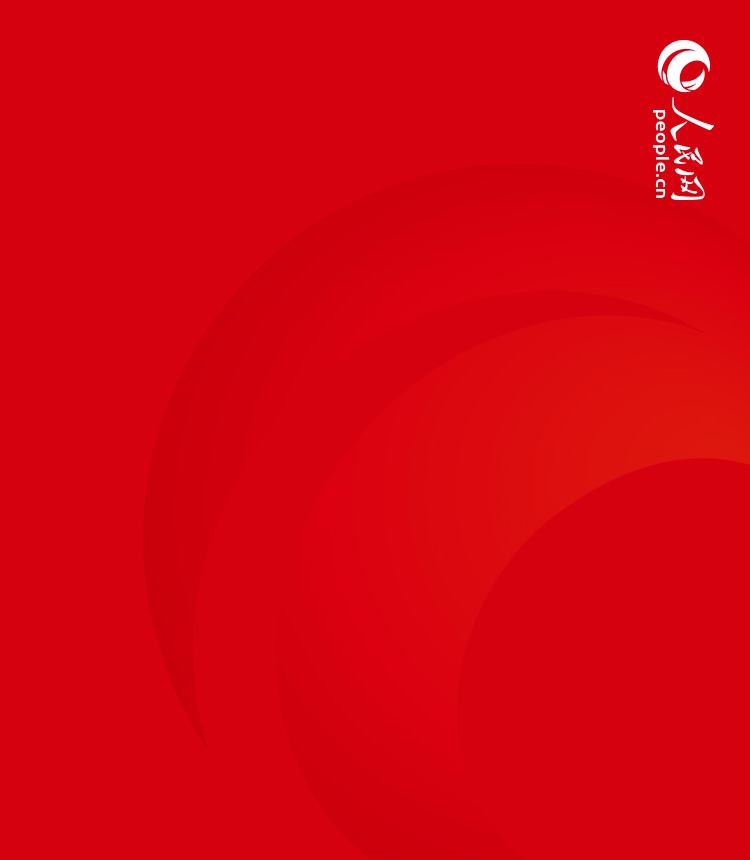
监制:刘慧 吴成良 常红
创意策划:寇杰
图片:Tanja Herko
文字:寇杰 申玉环 徐祥丽 刘洁妍
设计:张晗
技术:郭栖澎
审校:杜明明 杨牧
音乐:拉西敖斯尔
